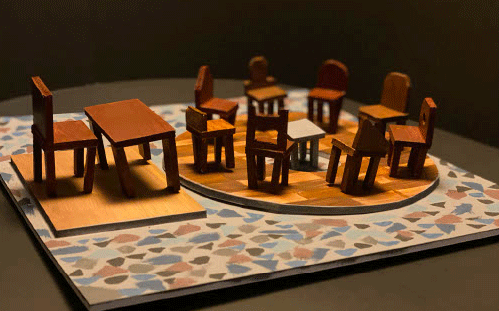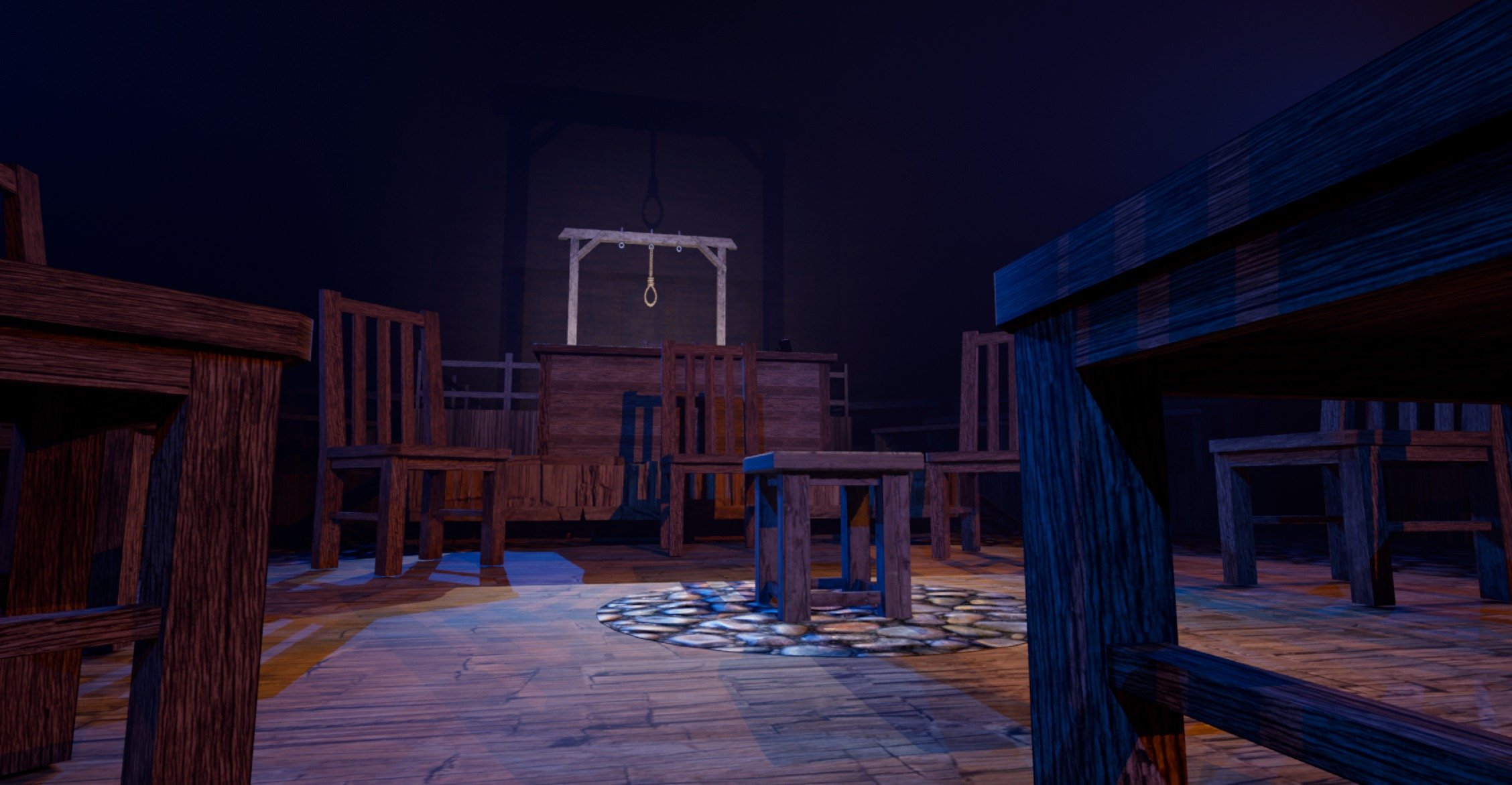Salem 1692
SCAD PROD 720 - Evolution of Production Design
Assignment: Create a theater venue and describe the production that might occupy it.
While working at The Playmill Theatre in West Yellowstone, Montana, my friends and I became obsessed with social deduction board games - specifically Salem 1692 by Facade Games. We would play on the stage of the theater and create lighting and sound cues for the different stages of gameplay. It was a really fun and immersive experience that added some spookiness to the game! So when I was given my first assignment during my graduate program at The Savannah College of Art and Design, I wanted to expand on our experience playing the game together.
Concept & Mood Board
Before deciding on the theme of the Salem Witch Trials, we were given two Archetype Cards to inspire our designs. I was given the cards "Gossip" and "Judge." I thought a lot about moments in history that were driven by these two archetypes, and the witch trials immediately came to mind. When thinking about colors and the set design, I thought about the opposite of these two attributes, which made me think about support groups. Recovery groups are an example of a nonjudgmental environment where gossip isn't allowed in the slightest - so what if I took that familiar setup and turned it into an environment where you felt like you were on trial and surrounded by the shape that normally encouraged open expression? I was really excited about this idea!
I decided the venue would be a theatrical space inside of a theme park for a haunted event (such as Halloween Horror Nights at Universal Studios) that houses on a 25-minute production themed to the Salem Witch Trials of 1692 featuring special effects, trickery, and tons of spooks!
My initial mood board for the project, focused on the chair layout of recovery support groups, cold colors, and court rooms.
Gesture Model
We were tasked with creating a rough gesture model of the stage. This was my first time creating a model, and the process really helped me get a visual idea of the space quickly. It was also really fun to use some LED strips to experiment with more dramatic lighting.
Unreal Engine 5 Visualization
We were told to create imagery showcasing the venue and production. I decided to explore the then-beta of Unreal Engine 5. This was my first use case of the Unreal Engine for real-time visualization, and I've never looked back! I was incredibly impressed with how quickly I could develop the environment, adjust lighting, and be immersed in the space. This also allowed for some really fun imagery from different angles, such as by the noose behind the judge's desk or views from the seat of the accused.
I've used The Unreal Engine on nearly every set design since and will be utilizing the game engine in my Master's thesis project as an exploration into the previsualization of live entertainment and nighttime spectaculars.
A top-view of my simple set design before lighting and other effects were applied.
An image of my set and venue design before applying lights and haze rendered in Lumen.
The same angle of the set design with real-time effects in the Unreal Engine 5.















